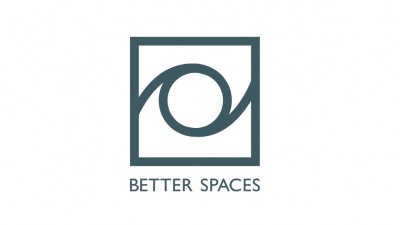To Promote A Multigenerational Workforce, Landlords Focus On Human-Centric Office Design

As the U.S.’ largest generational cohort becomes the majority of the American workforce, architects and designers are working to answer a single question: What do millennials want?
The answer is more complicated than open and collaborative office spaces filled with bean bag chairs and hammocks. Millennials make up one-third of the modern workforce, but other generations are influencing the corporate environment. By 2020, four or five generations could be working in the same office. Instead of tailoring the office to millennial preferences, which are constantly evolving and often based on stereotypes, more architects are designing office space to support a multigenerational workforce.
A recent study from Pew Research found that three major generation types make up the U.S. workforce. Millennials account for 35% of the labor force, while Generation X, or those born roughly between 1965 and 1980, make up 33% of the working population. Baby boomers, who as recently as 1994 held 50% of the American workforce, now make up just 25%.
Over the last few years, researchers have noticed subtle differences between what these generational cohorts value in the workplace. Interior Architects reported that members of Gen X are motivated more by compensation than social good. For millennials, the reverse is true. The report also found that millennials enjoy mixing work and play more than other generations. While these generalizations do not describe every employee, they can help inform companies about how to design their office.
“Workplace innovation is not monopolized by millennials," BetterSpaces Solutions Developer Bukky Awosogba said. "When age diversity is taken into account, it is universally embraced."
BetterSpaces is a company using technology, including a mobile app and web portal, to develop workplace communities within buildings.
"What really makes office design human-centric is what goes on in the space and how people are able to connect to each other," Awosogba said. "We've noticed that programs and technology have the ability to activate space, form communities and seamlessly bridge the age gap. When a 48-year-old VP takes a seat next to a 23-year-old intern to meditate, it's clear that we all strive to be our best selves at work."
Cynthia P. Martinez, an interior designer with more than 20 years of experience designing commercial space, has noticed several patterns across generations.
“Boomers are comfortable with traditional and transitional layouts,” she wrote in a blog post. “Generation X can navigate this wide spectrum, but tends to prefer somewhere in between the transitional and more open office layouts. They may not be as excited about the whimsical and unstructured office design as millennials, who’ve shown preference for an unstructured, expect-the-unexpected workplace and are perfectly comfortable working from a coffee shop and playing air hockey in the middle of the workday.”
Martinez also noted that Gen Z, the generation born after millennials, will graduate college over the next few decades and begin to occupy a larger percentage of the workforce. Gen Z appreciates different work environments, but prefers to know the purpose of each physical workspace, she said.

To meet the various needs of these different generational groups, Martinez recommends implementing tools that help employees understand their office space. Much like a city block or grid, an effective office layout should use clear and directional circulation, employ interior landmarks like graphics and signage and define different rooms and spaces based on how they will be used. For example, a company might call one area of the office "the library" to communicate that it is a quiet working space, whereas a room designated for meditation or breast pumping might be labeled as a “wellness room.”
To design for this evolving, multigenerational workforce, designers and architects are also creating spaces that support different working styles. More offices have implemented a design approach that allows employees to work the way they want to. The future of the office lies in agile workspaces, office environments that are space-efficient and productive, Morgan Lovell reports. Dynamic, activity-based layouts offer workspace that appeals not only to different generations, but also people with different job functions.
For example, many office plans offer a combination of open space, conference rooms and secluded spaces. This provides an opportunity for employees with more collaborative roles to work alongside their peers while offering a more focused environment for workers with roles that require phone calls or a quiet atmosphere to complete tasks. These spaces also give employees the space they need to have private meetings or conversations, such as a yearly review between an employee and manager.
As workplace demographics change, there has also been a rise in remote work. According to Upwork’s Future Workforce report, 63% of employers have someone on their team who works remotely. A number of these companies have remote and on-site workers, so creating spaces and environments conducive to video chatting and conference calls can also help streamline communication between these employees.
To attract and retain a multigenerational workforce, companies are implementing designs, programs and technologies that can help employees do their jobs effectively. As the workplace continues to evolve and different generations are redefining the office, more companies are implementing designs that can help employees do their jobs effectively. Understanding who these employees are and how they prefer to work can allow companies to make the right investments in the office.
This feature was produced in collaboration between Bisnow Branded Content and Better Spaces. Bisnow news staff was not involved in the production of this content.

